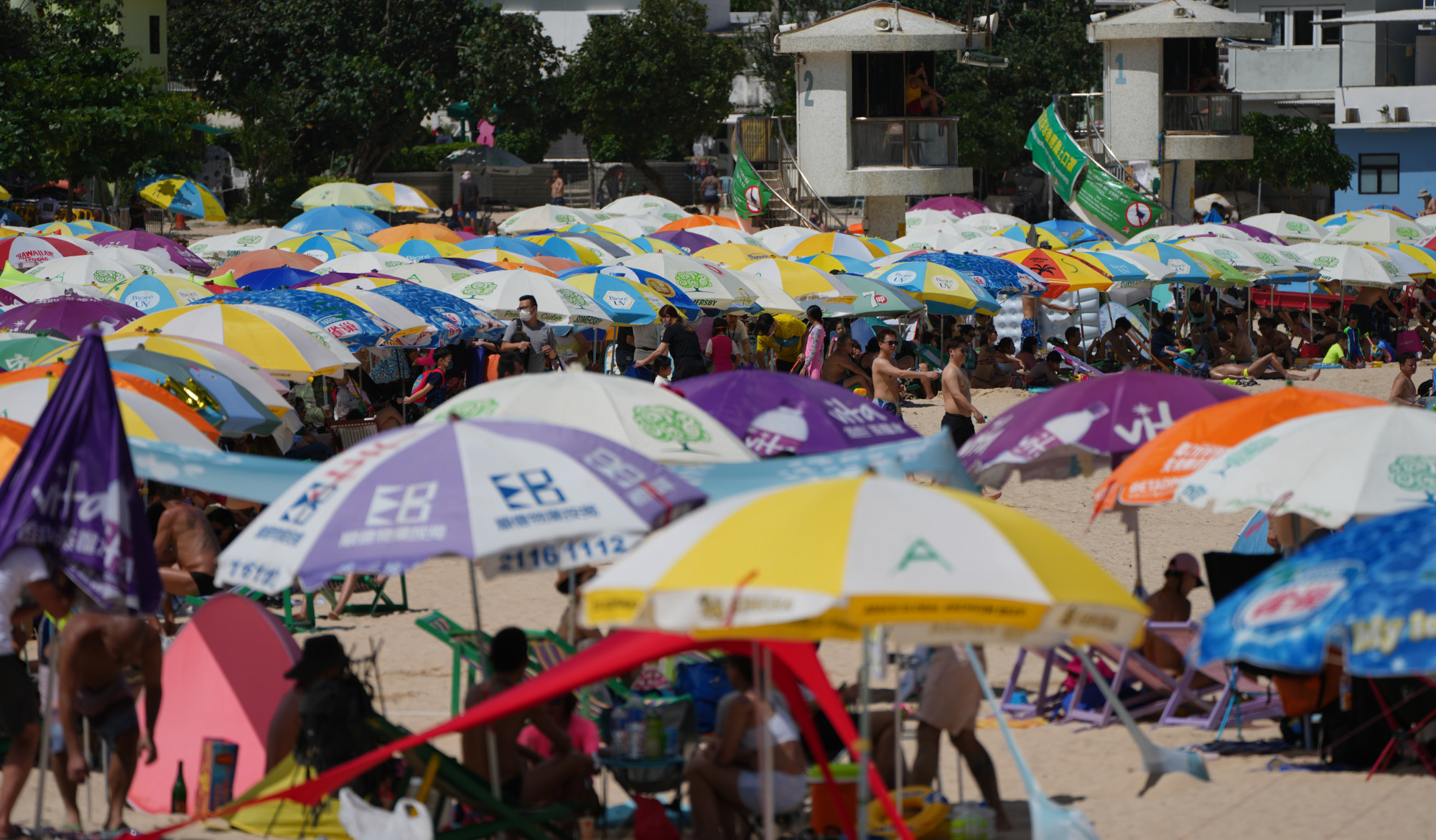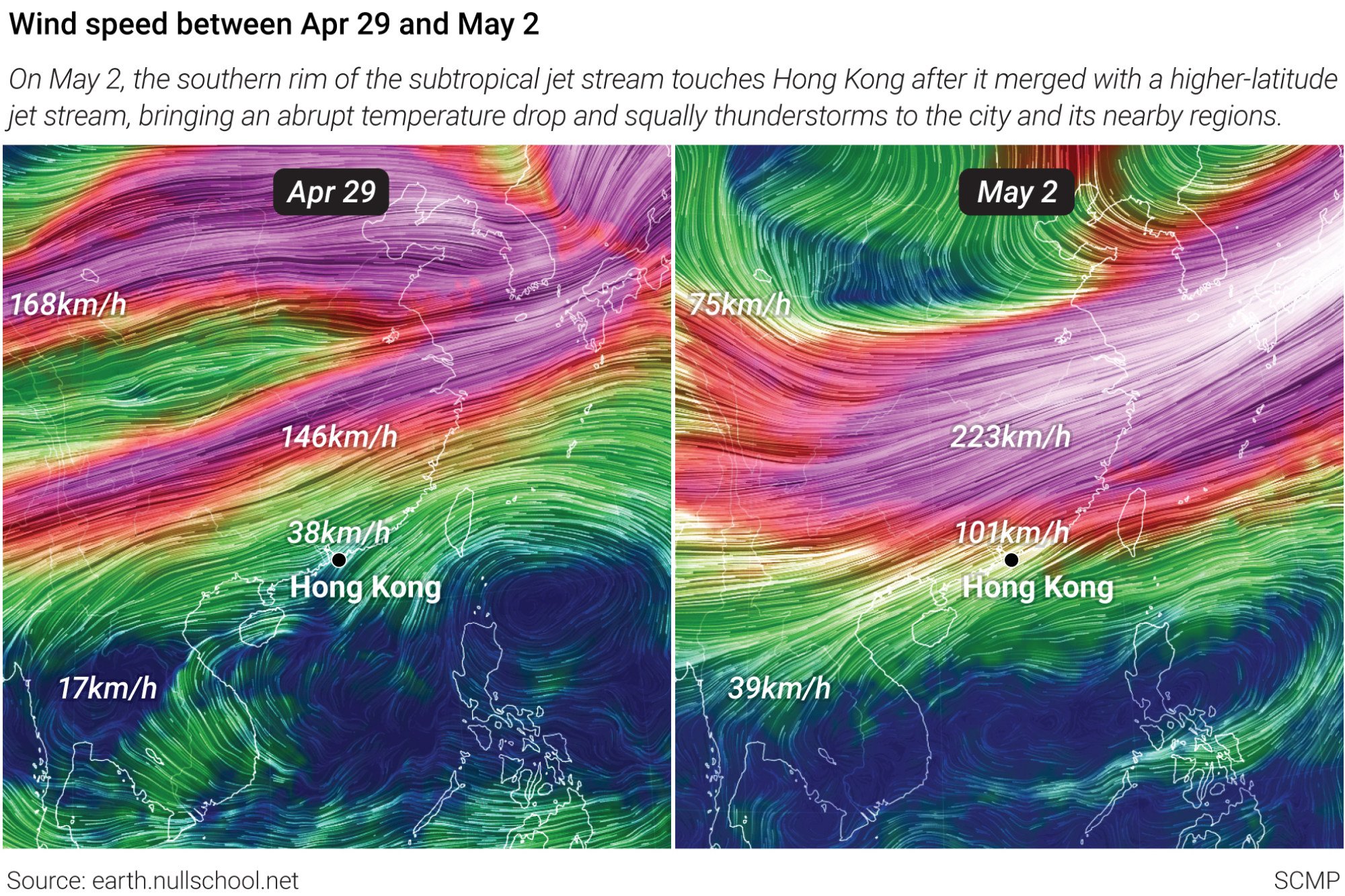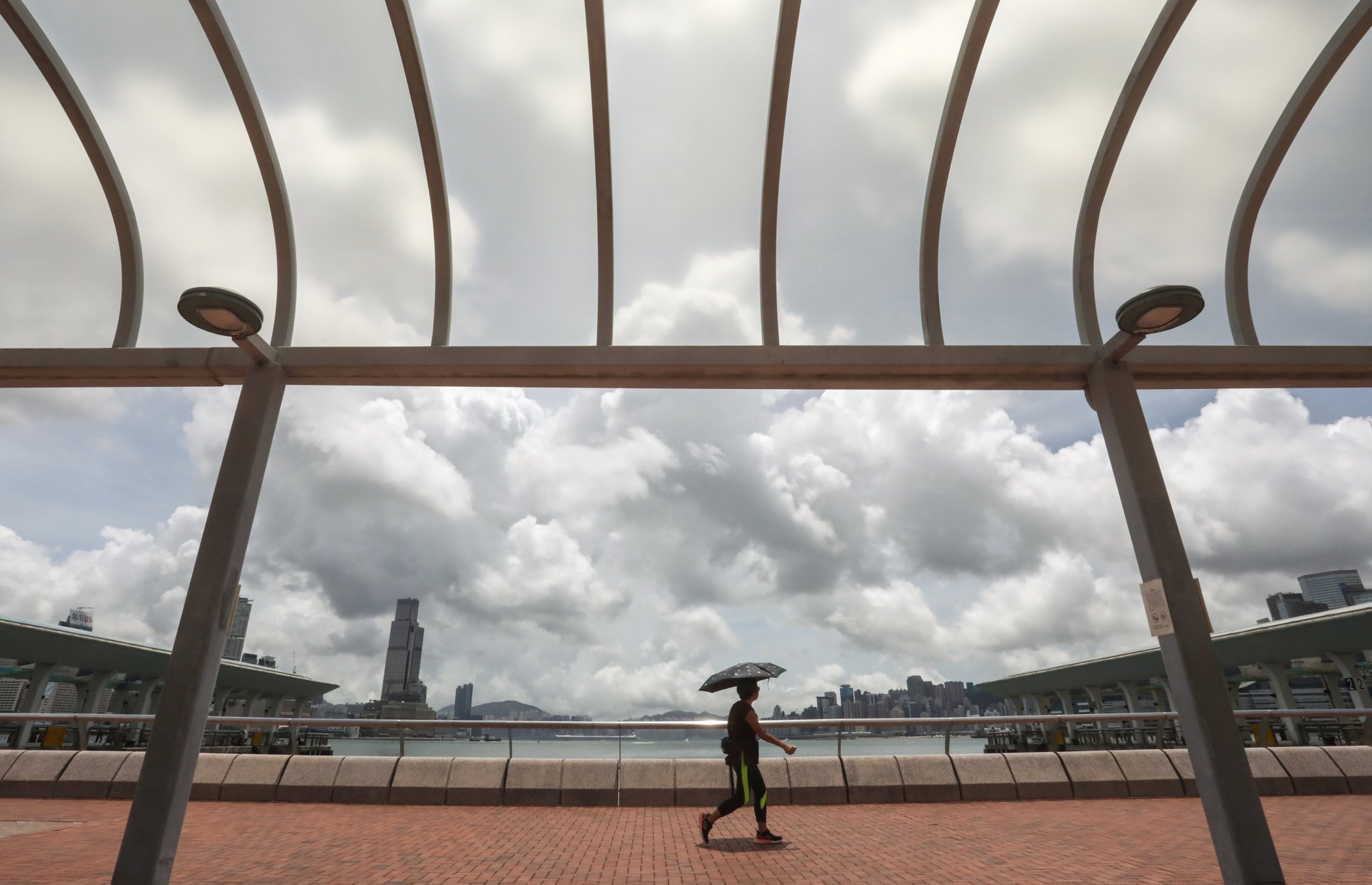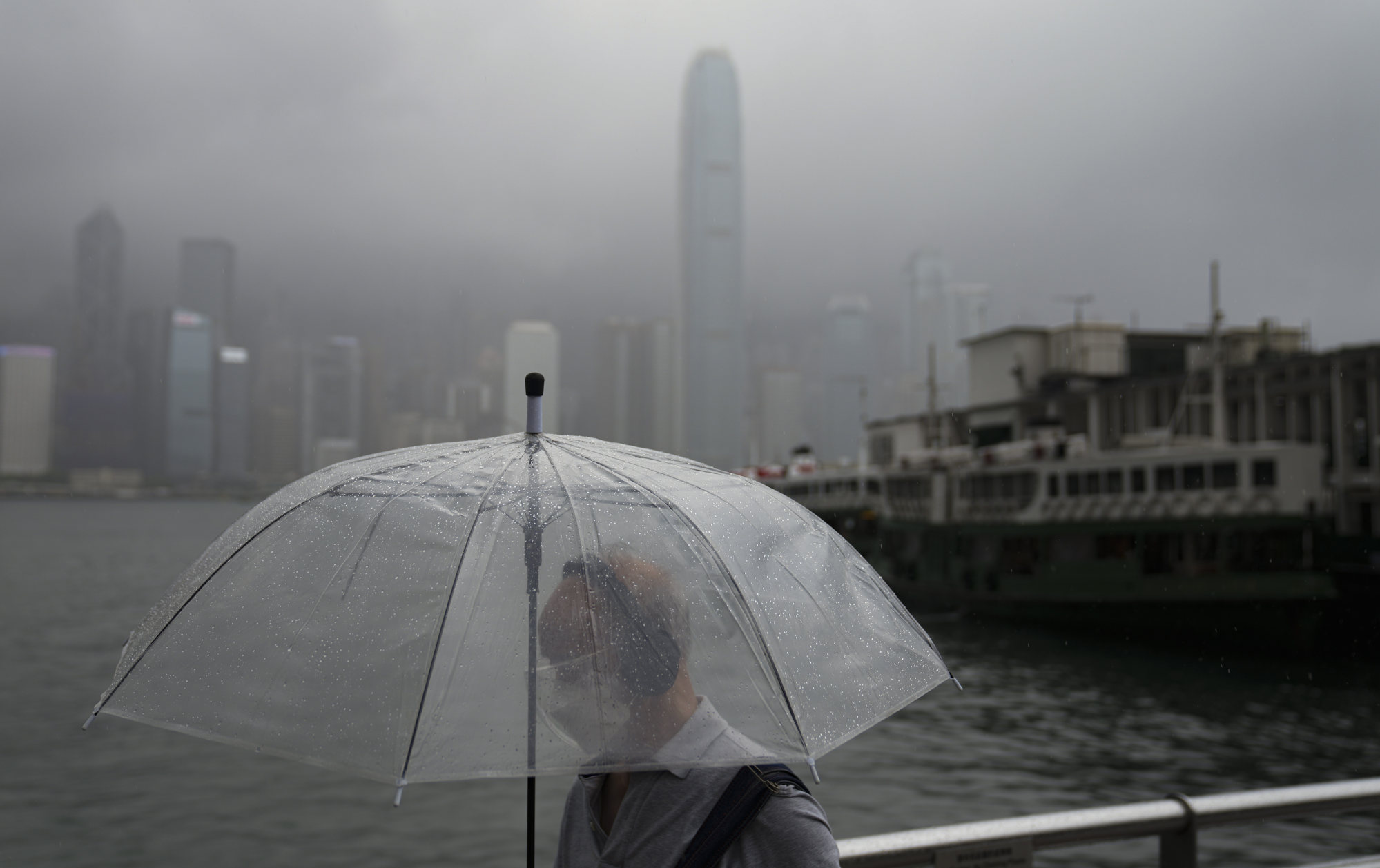
What’s wrong with Hong Kong’s weather? How climate change has caused recent erratic conditions
- Impact of climate change on the city is becoming increasingly obvious, according to local and international scientists
- More hospitalisations from effects of extreme heat, wildfires and droughts, not to mention further weather unpredictability, could be on the way
May was a tough month for operators of Tin Yeah, a community-supported agricultural programme in Hong Kong, and the farms that work with it.
With days-long downpours, two of the five local farms in the scheme, which directly connects growers and consumers, were forced to suspend production for as much as 10 days, running up losses in the tens of thousands of dollars.
Due to the unexpectedly cloudy weather, their summer harvest, including watermelons, cucumbers and string beans, is likely to be delayed. Meanwhile, the farms have had to replant aubergines while pests devoured all the leafy greens at one site. Sizzling heat at one point followed by plunging temperatures also added to their woes.
“The infestation was beyond imagination,” Carol Mak Ho-ying, operator of Tin Yeah, said. “We’re already worried about next week’s harvest. The huge temperature difference also killed the plants.”
For local farmers drawing up their planting schedules, climate change has become a major challenge. Their case is just one example of how Hong Kong is feeling its effects, with experts warning worse could be on the way including an increase in people sent to hospitals from the effects of extreme heat, more wildfires and a recurrence of droughts, not to mention further unpredictability in the weather.
“It was rather unusual this time. The rainfall was heavy, but it differed greatly from region to region,” Observatory director Cheng Cho-ming said earlier this month. “Under the premise of climate change, we expect rainstorms to be stronger in the future … and more frequent.”
Both local and international experts interviewed by the Post said the impact of climate change on the city of 1,100 sq km was becoming increasingly obvious, albeit manifesting itself slightly differently from places better-studied by scientists.
Day-to-day changes?
Hong Kong recently experienced some of its most dramatic temperature swings on record.
On April 29, the Observatory issued its earliest ever “very hot weather” warning since introducing the system 22 years ago, with the mercury reaching a sweltering 35.7 degrees Celsius at the Wetland Park in the city’s northwest.
But just four days later, Hongkongers experienced the coldest May day recorded since 1917, with a minimum temperature of 16.4 degrees.

The cold snap was followed by nearly a week of squally thunderstorms in the middle of the month, with several mainland China weather agencies warning that the most significant amount of rainfall since the flooding season began in mid-March would sweep across the nation’s south.
The Observatory said a trough of low pressure spanning thousands of kilometres from southern China to Japan had caused the rainstorms and brought unstable weather to the city.
The intermittent, hard-to-predict downpours prompted the Education Bureau to suspend morning and whole-day classes at kindergartens, primary schools and secondary schools on May 13. But shortly after the suspension was announced the heavy rain stopped.
While Observatory senior scientific officer Olivia Lee Shuk-ming at the time said the fickle weather patterns between late April and early May were “day-to-day changes” and unrelated to global warming, other specialists demurred.
“My estimation is [the temperature shift] could be an outcome of a jet stream fluctuation,” said Johnny Chan Chung-leung, an emeritus professor of atmospheric science at City University, referring to air currents in the atmosphere. “Under global warming, the weaker the stability of the jet stream, the more the temperature fluctuates.”
Climate crisis generation can usher in an era of responsible capitalism
Chan, a former director of the China Meteorological Administration’s Shanghai Typhoon Institute, has studied global warming and its relationship with cyclones and monsoons.
A jet stream, first documented by US bombers during missions to Japan in World War II, maintains a steady weather system that moves across the troposphere – the lowest layer of the atmosphere – between eight and 15km (five to nine miles) above the Earth’s surface.
Travelling at speeds of more than 123 metres a second (275mph), the narrow bands of strong and sinuous air currents that blow from west to east carve up parts of the planet roughly into various temperature zones.
They have a powerful influence on weather and climate patterns, and scientists believe any changes in the strength or position of the jet stream could lead to substantial ripple effects worldwide.

Chan suggested that rising air temperatures might have caused the jet stream to destabilise in recent decades and given rise to severe temperature swings in Hong Kong.
“This could be why some days in wintertime are so warm people will wear short-sleeved clothes nowadays, but there could suddenly be a days-long chill as spring approaches, which we didn’t see happen as often 10 to 20 years ago,” Chan said.
Climatologists have generally hypothesised that the jet stream will gradually weaken as a result of global warming, causing the polar regions to heat up more rapidly than other parts of the globe, a phenomenon they call polar amplification.
Warming in the Arctic region would reduce the temperature difference between the poles and the warmer mid-latitudes, causing the jet streams to become more variable in their course.
With a weaker jet stream, they suggested the frigid, rotating air encircling Earth’s polar regions would be more likely to leak out and thrust cold weather to areas closer to the equator, leading to extreme weather.
Research has revealed that in the northern hemisphere, the spillage may extend as far south as Florida in the United States. But whether it can reach Hong Kong is uncertain since the relevant studies focus more on Europe and North America.
World must spend more money to prevent disasters, UN says
Bigger swings
But Noboru Nakamura, a professor of geophysical science at the University of Chicago who specialises in environmental fluid dynamics, said the subtropical jet stream could go at a latitude between 25 and 35 degrees north, which could affect Hong Kong, located at about 22 degrees north.
Using satellite images, Nakamura said thunderstorms over the Philippines and the South China Sea intensified an anticyclone just south of Hong Kong in late April, bringing calm and cloudless conditions to the region and pushing the jet stream to the north.
But he noticed a merger of a higher-latitude jet stream with the subtropical jet over Japan on May 2. The coupling of fast-moving currents pushed southwards to touch Hong Kong and brought about a sudden change in the wind direction. The broad trough of low pressure, which he said was part of the jet stream fluctuation, kindled the formation of cloudy and stormy conditions.
“It seems like it’s a behaviour of this subtropical jet stream … brought in unseasonably warm air early on the end of April,” Nakamura said.
“In this case, early May. Apparently, in Hong Kong, there was this latitudinal fluctuation and a sharp boundary between the continental layer and the warm, oceanic air. That’s what basically you guys experienced.”

Such incidents could occur more in the future if the climate continued to warm, he added.
Even though Chan said it was difficult to attribute any single incident, including the recent temperature swing, to climate change, he noted that the way in which it budged the usually westerly winds towards the south or north would increase the likelihood and frequency of such an occurrence.
“The north-south displacement of the jet stream can have a larger fluctuation in both space and time,” he said. “The impacts are larger temperature fluctuations in a short period of time – within a few days – or [that] high or low temperatures can persist for a long period of time.”
But not all scientists agree on the hypothesis that the warming Arctic leads to fluctuations in jet streams, saying the findings are far from conclusive to arrive at a consensus. Some have argued that the correlation might not imply causation.
Earth scientist Jed Kaplan, an associate professor at the University of Hong Kong, said: “Swings in temperature aren’t so unusual. I don’t think going from a hot day to a cold day over the course of a day or two is a good example of climate change.
Can government revamp help Hong Kong achieve its climate goals?
“What’s a much better example of climate change is that April has been drier and sunnier than usual. It looks like this is becoming a recurring thing every year where we’re getting these anomalously warm and dry conditions in the spring.”
Hong Kong’s May downpours stood in marked contrast to the previous month, with the Observatory reporting the city experienced an “extremely dry and sunny” April in a monthly round-up.
The forecaster noted the month’s 3.5mm of accumulated precipitation, or 2 per cent of the normal level of 153mm, was “the lowest on record for April”. The sunshine duration also increased by 69 per cent year to year, it added.
The relative humidity plunged to 22 per cent at one point on April 8, which the agency referred to as “the lowest on record” for the month after it established an automatic weather station almost four decades ago.
“We are seeing long-term [effects], with the springtime temperature going well outside the realm of anything that Hong Kong has experienced over the last 150 years,” Kaplan said. “[Climate change] is not subtle if you live on the streets. The hot-weather warning, this is really in your face.”

Scorched Earth
According to the US’ National Oceanic and Atmospheric Administration (NOAA), Earth’s surface temperature has risen by 0.18 degrees every decade since 1981.
For Hong Kong, the Observatory’s analysis in January showed an average rise of 0.13 degrees per decade since 1885, meaning the city could have warmed by almost 1.8 degrees as of last year.
Kaplan warned of a possible increase in the frequency and intensity of wildfires in the city due to the recurrence of drought, accusing the government of failing to keep track of such incidents.
“I hope that the government will take it seriously,” he said. “Many other governments certainly do. There are government agencies that very carefully track the size of wildfires every year.”
According to data from the Fire Services Department, wildfire cases stood at 1,128 in 2020, up from a low of 810 in 2013. The increase coincides with rising temperatures.
Researchers have estimated that wildfires globally will result in as much as US$200 billion in damage in 2022, compared with US$50 billion in an average year.
Last year, the European Union marked the second-worst wildfire season across its 27 member states since the European Forest Fire Information System started logging data in 2000, with more than 1.1 million hectares scorched.
US looks to China for teamwork on climate change and arms control
The US state of Alaska also saw the widest-ranging conflagration in April in more than 25 years, covering more than 4,000 hectares.
The vast state, the northern third of which sits inside the Arctic Circle, set a new statewide temperature record for December last year, with its Kodiak tide gauge station in the south hitting almost 20 degrees on December 27.
Nearby Kodiak airport recorded a maximum temperature of more than 18 degrees on the same day, surpassing its previous record of seven degrees set on December 26, 1984.
Greenland, two-thirds of which is also within the Arctic Circle, documented one of the most intensive ice melt years on record in 2021, with an NOAA report written by more than 100 scientists concluding in December the Arctic was heating up twice as fast as the rest of the planet.
“We have, potentially, a very big role here as Hongkongers in leading the way to think about climate change and take action about climate change,” Kaplan said. “Perhaps at a societal level, we need to be thinking about how we make contingency plans to help people avoid extreme heat and other things, like really heavy rain.”

Not just for polar bears
Environmentalists have warned of the indirect and long-term impacts on the city because of climate change.
“Climate change may seem out of sight for many Hong Kong people, but it is not. It doesn’t just affect polar bears,” Greenpeace campaigner Tom Ng Hon-lam said. “It is spring in April in Hong Kong. It was supposed to be a wet season.
“In the face of more unpredictable weather patterns, it’d be trickier for people to prepare themselves. People could suffer more easily from conditions like heat exhaustion.
“The increasing number of hot days will boost hospitalisation rates, piling more pressure on health services.”
Hong Kong has been accused of falling short on thermal insulation in buildings, making homes and offices more susceptible to fluctuations in temperature.
Charity Oxfam Hong Kong found in a survey last September that some dwellers in subdivided flats with poor ventilation had to withstand room temperatures of more than 35 degrees during summer, hotter than outdoors.
Nomura leads US$6 million investment in Hong Kong start-up Allinfra
More than 90,000 households were living in subdivided flats as of December last year, with a 3.6 per cent rise from 2020, official data showed.
The city recorded its warmest year on record in 2021, with 54 very hot days and 61 hot nights, meaning the daily minimum temperature was equal to or higher than 28 degrees, with new towns in Yuen Long, Tin Shui Wai and Tseung Kwan O experiencing warmer nights due to their high building density and reduced green spaces.
According to the World Health Organization, climate change affects people’s well-being and health in various ways, from food shortages to deaths and illnesses related to frequent extreme weather events.
The WHO added that the crisis would cause about 250,000 additional deaths annually between 2030 and 2050, with direct costs to public health estimated at US$2 billion to US$4 billion each year.

The United Nations Refugee Agency also said an average of 22.5 million people had been displaced by climate or weather-related events each year since 2008.
Environmental groups said the government should address climate change in two ways – mitigating its effects and improving social resilience.
“The government should set more aggressive targets to reduce carbon emissions,” Ng said. “It should provide legal protection to outdoor workers and an all-round policy, including infrastructure and software, to deal with the increasingly extreme weather.”
It was important, he added, for the government to improve the overall living quality of residents, including air quality, temperature and ventilation, in the face of extreme weather events.
“This is hard for some people here in Hong Kong to deal with,” Kaplan said. “Not everybody has air con. Not everybody has a building with nice insulation where they can stay cool during these hot-weather warnings.”






